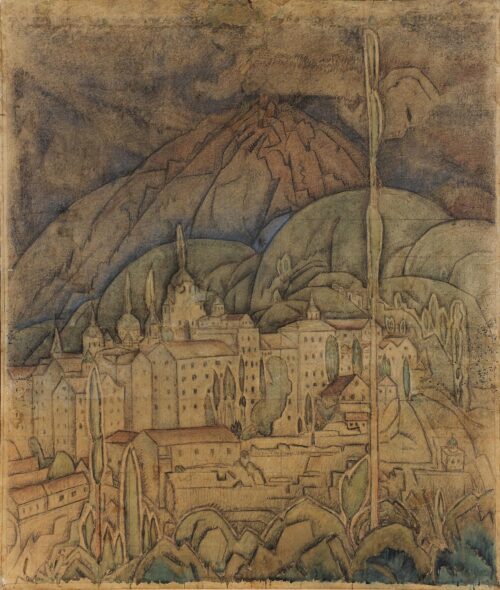
Papaloukas Spyros (1892 - 1957)
The Skete of Agios Andreas, 1932
He studied at the School of Fine Arts (1909-1916) under professors Spyros Vikatos, Dimitrios Geraniotis, Georgios Jakovides, Stephanos Lanza, Georgios Roilos and Pavlos Mathiopoulos, winning seven first prizes during his attendance. In 1917 he went to Paris where he continued his studies at the Julian and Grande Chaumiere Academies but stopped in 1921 to take part in the Asia Minor Campaign as a war painter along with Periklis Vyzantios and Pavlos Rodokanakis. The works he painted there were exhibited at the Zappeion Hall in 1922, but were later lost in the destruction of Smyrna.
During 1923-1924 he remained in Mt. Athos where he studied nature and Byzantine art and painted a series of works he exhibited at the end of 1924 in Thessaloniki. Having won the contest for the illustration of the Cathedral of Amfissa in 1926, he worked on the decoration from 1927 to 1932 while from 1932 to 1933 he painted an apartment building in the Exarcheia section of Athens, known ever since as the “Blue Apartment House”. His activity as a hagiographer and decorator continued with the illustration of other churches and the decoration of the Archaeological Museum of Herakleio; in 1926 his interest in set design commenced and he did sets for the performances at the National Theater, the Kotopouli Theater and elsewhere.
He taught freehand and decorative drawing at the Handicrafts School, starting in 1925, decorative arts at the Sivitanideio Institute starting in 1936 while in 1940 he was appointed decorator of the Town-Planning Service of the Ministry for the Administration of the Capital and the Technical Service of the Municipality of Athens. At the same time he assumed the management of the Municipal Gallery. From 1943 to 1951 he taught freehand drawing at the Architectural School of the National Technical University and in 1956 was elected professor to the painting studio of the School of Fine Arts.
During the period 1935 to 1937 he published, together with Stratis Doukas, Nikos Chatzikyriakos-Ghika, Dimitris Pikionis and Sokratis Karantinos the avant garde Greek magazine “Το Τρίτο Μάτι”. A founding member of the Art Group and member of the League of Greek Artists, he took part in their exhibitions, in group shows in Greece and abroad as well as in Panhellenies. In 1976 his work was presented in a retrospective exhibition at the National Gallery and in 1982 at the Cultural Center of the Municipality of Athens.
He was involved with portraiture and still life, but landscape is what dominated his painting which he rendered after having fully assimilated the doctrines of Byzantine art as well as certain post-impressionistic trends: Gauguin, the Nabis and Pointillism in particular. In his portraits he adopted various techniques while in his iconography he endeavored to combine traditional Byzantine types with elements derived from modern artistic trends.

The Skete of Agios Andreas, 1932
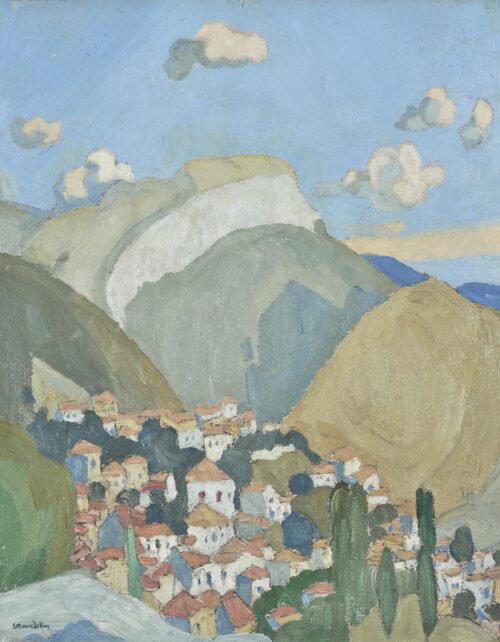
The Village of Yeras on Mytilini, 1925
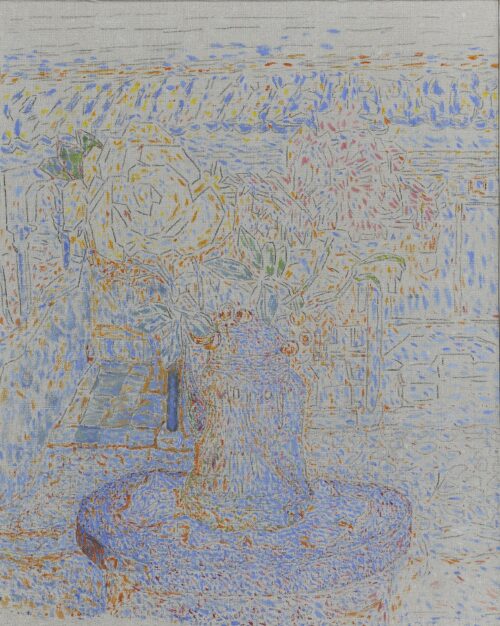
Vase of Flowers (pastel colors), 1955
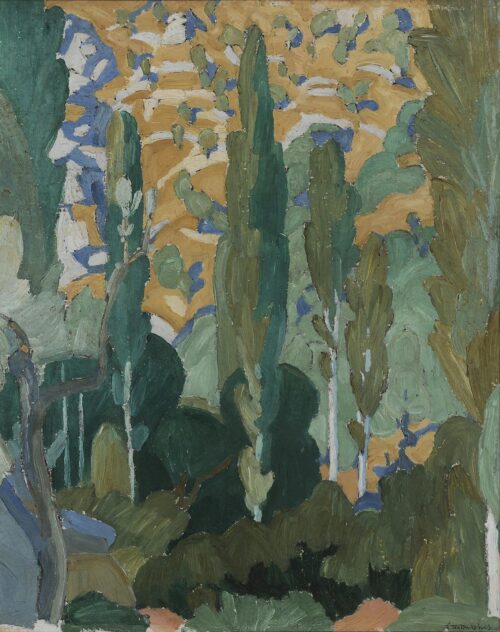
Landscape
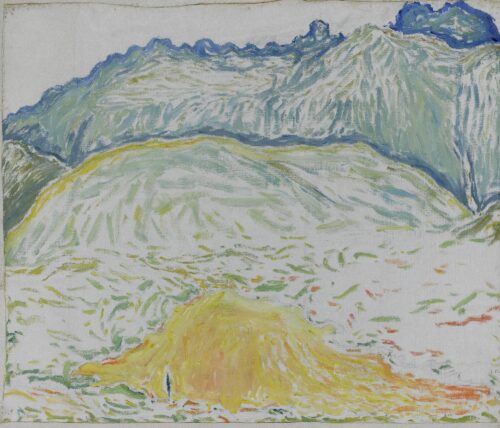
Landscape from Delphi, 1945
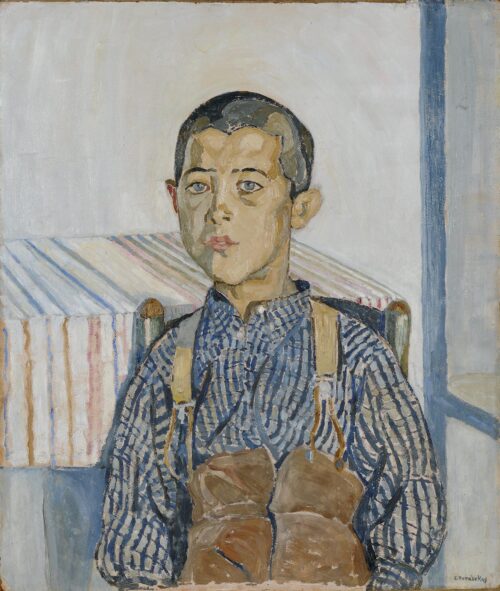
Boy with Suspenders, 1925
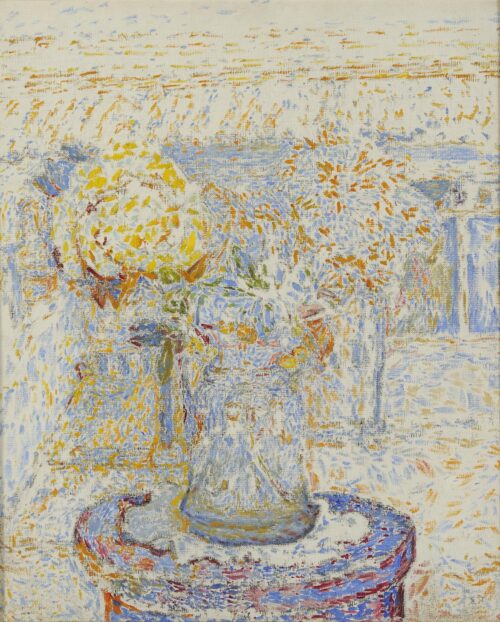
Vase of Flowers (dark colors), 1956
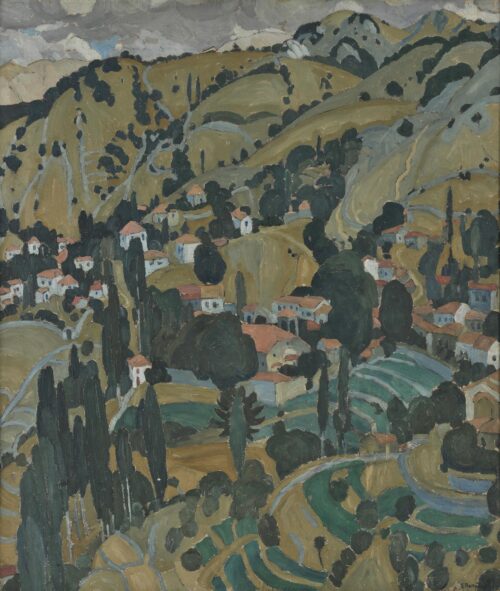
The Village Kameno on Lesbos, ca 1925
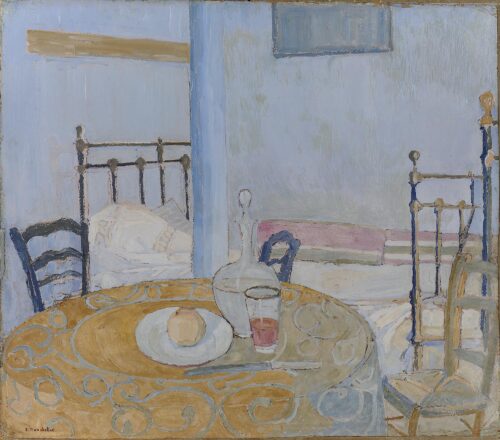
Guest Quarters at Lavra Monastery on Mt. Athos, 1924
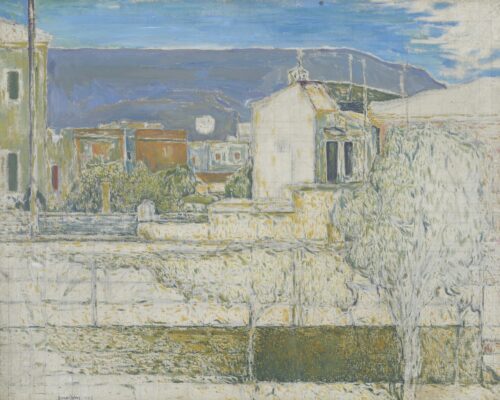
Houses in Kypriadis, 1938

We use cookies to make our site work properly, to personalize content and ads, to provide social media features and to analyze our traffic. We also share information about how you use our site with our social media, advertising and analytics partners. Read the Cookies Policy.
These cookies are necessary for the website to function and cannot be switched off in our systems. They are usually only set in response to actions made by you which amount to a request for services, such as setting your privacy preferences, logging in or filling in forms. You can set your browser to block or alert you about these cookies, but some parts of the site will not then work. These cookies do not store any personally identifiable information.
If you disable this cookie, we will not be able to save your preferences. This means that every time you visit this website you will need to enable or disable cookies again.
These cookies tell us about how you use the site and they help us to make it better. For example these cookies count the number of visitors to our website and see how visitors move around when they are using it. This helps us to improve the way our site works, for example, by ensuring that users find what they are looking for easily. Our website uses Google Analytics for statistics reporting.
Please enable Strictly Necessary Cookies first so that we can save your preferences!